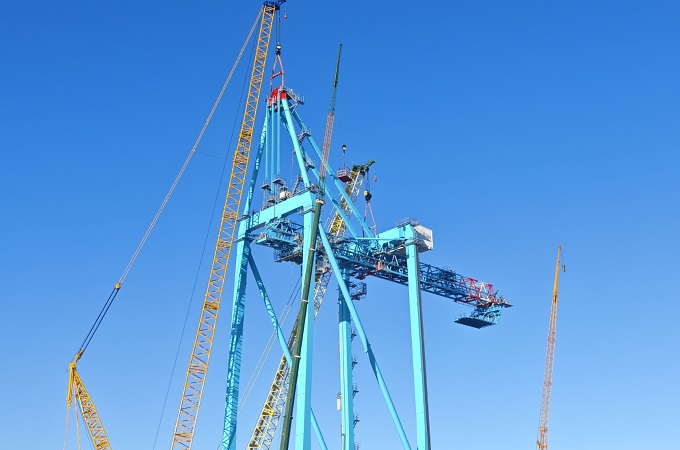Mammoet said the Port of Valencia took delivery of the two Liebherr ship-to-shore container cranes in large, preassembled components, for integration on site. Minimum disruption was witnessed during the assembly process at the Port of Valencia, it stated.
Building these giants in one of the Mediterranean’s busiest seaports would require expert forward planning and efficient execution.
According to experts, cargo ports handle thousands of ships every year. Efficiently offloading and loading vessels is essential for their smooth operation and maintaining global supply chains.
Many ports however face capacity constraints, with newer lifting equipment required to accommodate bigger ships and loads.
When it comes to container crane installations at ports, work must be carefully managed to minimize disruption and avoid interfering with operations, they stated.
During the project, Mammoet, along with engineers from Liebherr, managed different teams of sub-contractors to make all the mechanical and electrical connections between the different components.
Both STS cranes' components were offloaded onto Self-Propelled Modular Transporters (SPMT) - heavy-duty vehicles used for transporting extremely large and heavy loads - using the delivery vessel’s crane.
The largest of these were the main beam and the derrick boom, which measured 69.6m and 76.3m respectively.
Almost 90 axle lines of SPMTs were used on the project to move the components safely across the site.
Once the components were taken to the assembly area, Mammoet used crawler cranes, telescopic cranes, cherry pickers and forklifts to begin assembly of the first crane.
The working cranes had different capacities across the different stages of the project. The telescopic cranes had lifting capacities of between 80 tonnes to 250 tonnes; the two crawlers each had a capacity of 600 tonnes, it stated.
The telescopic crane worked with the crawlers to top and tail the main frame sections – performing a tandem lift to place them in the vertical upright position and onto bogies, it added.
Mammoet said once both cranes were assembled, they were driven to their final position on the quayside.
For this stage, SPMTs was used but fitted with two interfacing transport beams to help spread the load and connect the crane’s landside frame to its seaside frame for stability, it stated.
The STS cranes have a transport bracket on each of their four legs. The SPMTs were driven underneath the cranes, and the transport beams were connected to these brackets.
According to Mammoet, once everything was securely fastened, the STS cranes were lifted using the on-board stroke of the SPMT. They were then driven 600 m to the quayside and lowered into their longitudinal rails, it stated.
"As soon as the components were delivered, they were immediately taken away from the quayside to allow operations to continue. The installation process was equally as quick, minimising disruption," said Javier de Pablo Arenzana, the sales manager at Mammoet.
"We have worked with Liebherr for many years and across a number of different projects. Liebherr value our expertise and experience and are proud to be one of Liebherr’s key partners for this kind of work," he added.-TradeArabia News Service































